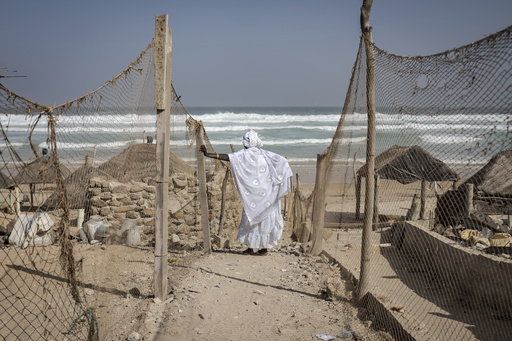In the vibrant community of Yoff in Dakar, a profound sense of spirituality filled the air as numerous followers of the Layene brotherhood, a Sufi order, came together to honor the significant historical event of their founder, Seydina Limamou Laye’s first public appearance, which occurred in 1884.
On Friday, the streets leading to the mosque overlooking the beach were adorned with worshippers clad in immaculate white garments, a representation of purity and equality in the eyes of God. This gathering, referred to as “L’Appel” or “The Call,” celebrated the 145th anniversary of Limamou Laye’s provocative proclamation as a prophet.
Though the Layene brotherhood is smaller compared to other prominent Sufi sects in Senegal, such as the Mouride and Tijaniyya orders, it has attracted interest for its unique beliefs. These include the assertion that their founder is a reincarnation of the Prophet Muhammad, a stance that differentiates them significantly from other Sufi traditions.
According to Cheikh Babou, a historian specializing in West African Sufism at the University of Pennsylvania, the idea of reincarnation holds a central role within the Layene, unlike any other Sufi order. “It stands out distinctly in Senegal and the broader Muslim world,” he remarked.
As a key part of the celebrations, many pilgrims journeyed to a holy grotto, the location where Seydina Limamou Laye sought solitude and meditation. Believers hold that it is here he received divine revelation—solidifying the site as an enduring emblem of his spiritual journey and a critical connection point between the Layene community and their revered founder.
Limamou Laye’s teachings emphasized the return of the Prophet Muhammad in the form of a Black individual, charged with the mission to bring justice and amend injustices like those stemming from slavery. This powerful message concerning racial equity and spiritual unity continues to inspire loyalty among followers in contemporary times.
Moussa Lahi, a participant in this year’s commemorative events, passionately expressed that Seydina Limamou Laye’s teachings extend beyond racial confines. “His significance is a source of pride for all people, irrespective of their skin color, as he stands as a universal prophet,” he stated. “He created a realm of equality among different races—true integration of Black, white, and other communities.”



